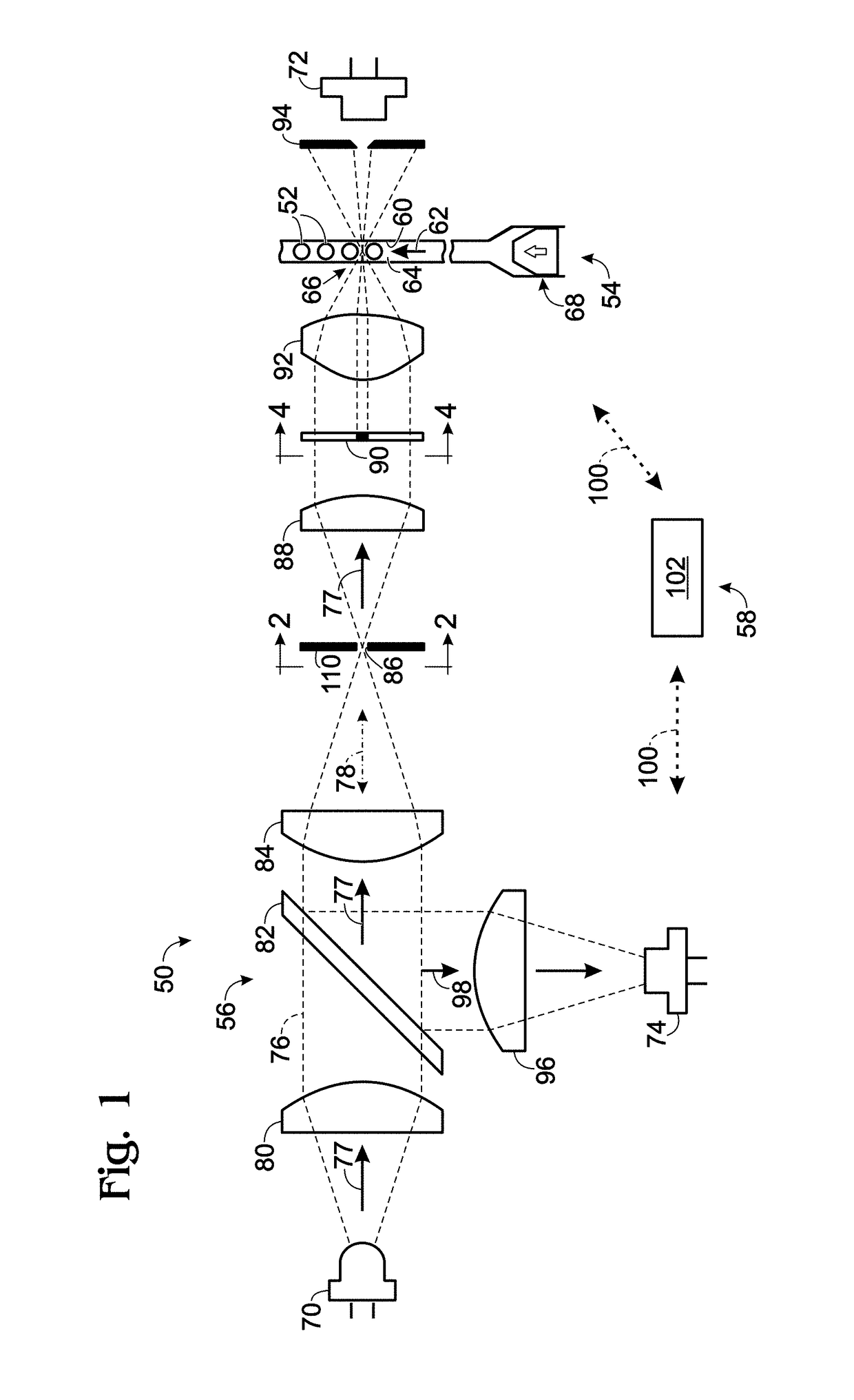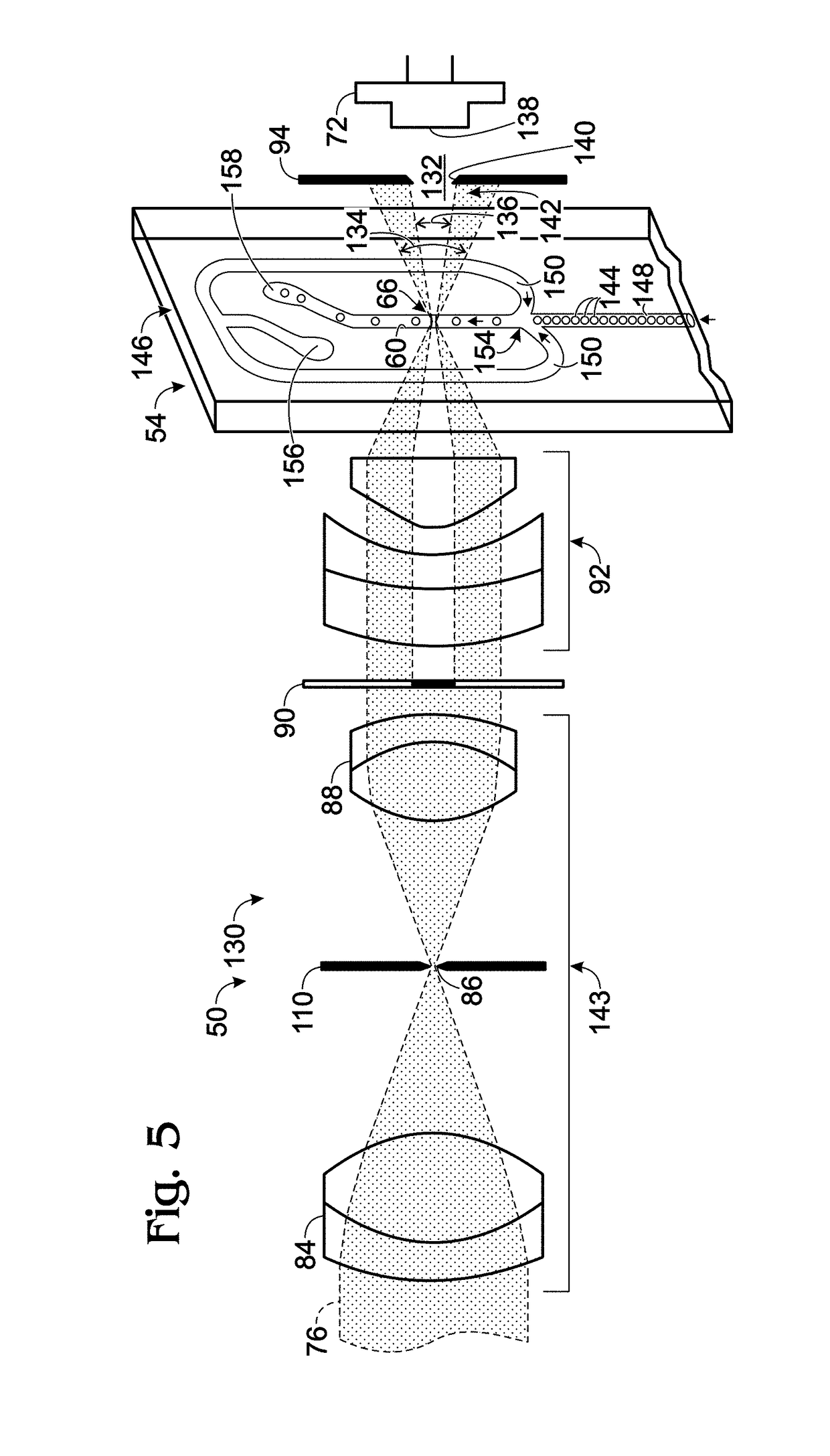Detection and signal processing system for particle assays
a signal processing and particle assay technology, applied in particle and sedimentation analysis, measurement devices, instruments, etc., can solve the problems of particle-based assay skewed by overestimating or underestimating the number, and fluorescence alone may not be adequate to accurately detect the presence of particles
- Summary
- Abstract
- Description
- Claims
- Application Information
AI Technical Summary
Benefits of technology
Problems solved by technology
Method used
Image
Examples
example 1
ptical Aspects of Detection and Processing Systems
[0169]This example describes further exemplary optical aspects of detection and processing systems.
[0170]The detection and processing system may be based on focused light of any detectable wavelength being deflected by a particle, such as a droplet, while the particle is in the detection volume. For the case of optically transparent particles, at least three mechanisms (e.g., Mie scattering, refraction, and reflection) can come into play. The detection of deflected light may be accompanied with measuring the fluorescence intensity originating from dye molecules inside particles, such as droplets. The same light source may be used to generate deflection and fluorescence signals, and thus optical radiation from the light source may be referred to as excitation light. Processing of synchronously-acquired deflection and fluorescence signals increases the accuracy of the amplitude and span of the fluorescence signal of each particle, in p...
example 2
spects of Signal Processing
[0176]This example describes further exemplary aspects of signal processing. The present disclosure provides methods and apparatus for analyzing data detected from particles, such as droplets. In some embodiments, the methods and apparatus include and / or utilize an algorithm for identifying droplet position and characterizing peaks of droplets from a deflection signal.
[0177]The present disclosure provides methods of automatically determining droplet position, size, and fluorescence signal values in one or multiple fluorescence channels using data collected from droplets. An exemplary method comprises a) providing an algorithm to determine the temporal positions of droplets from a deflection signal, b) calculating a size characteristic of each droplet from the deflection signal, c) calculating a signal value for one or multiple fluorescence channels for each droplet detected with the deflection signal, and d) providing droplet characterization information f...
example 3
Embodiments A
[0179]This example describes selected embodiments of the present disclosure as a series of indexed paragraphs. These embodiments should not limit the entire scope of the present disclosure.
[0180]Paragraph 1. A system for detecting and processing signals from particles, comprising: (A) two or more detectors configured to detect at least one photoluminescence signal and a deflection signal from particles passing through a detection volume; and (B) a processor configured to (i) identify waveforms in the deflection signal, at least a subset of the waveforms having a particle signature that includes a pair of peaks corresponding to a particle entering and exiting the detection volume, (ii) obtain an amplitude temporally corresponding to each of a plurality of the waveforms from each photoluminescence signal, and (iii) determine a number of particles having a given analyte content based on at least a subset of the amplitudes.
PUM
| Property | Measurement | Unit |
|---|---|---|
| width | aaaaa | aaaaa |
| width | aaaaa | aaaaa |
| widths | aaaaa | aaaaa |
Abstract
Description
Claims
Application Information
 Login to View More
Login to View More - R&D
- Intellectual Property
- Life Sciences
- Materials
- Tech Scout
- Unparalleled Data Quality
- Higher Quality Content
- 60% Fewer Hallucinations
Browse by: Latest US Patents, China's latest patents, Technical Efficacy Thesaurus, Application Domain, Technology Topic, Popular Technical Reports.
© 2025 PatSnap. All rights reserved.Legal|Privacy policy|Modern Slavery Act Transparency Statement|Sitemap|About US| Contact US: help@patsnap.com



